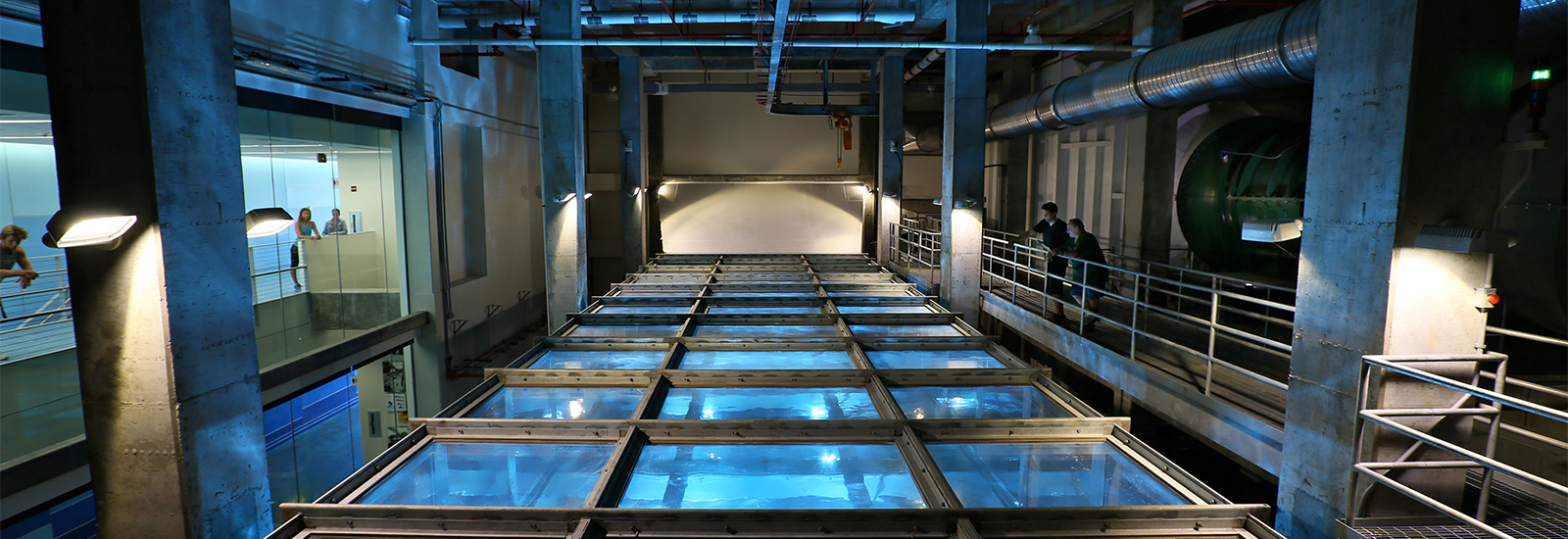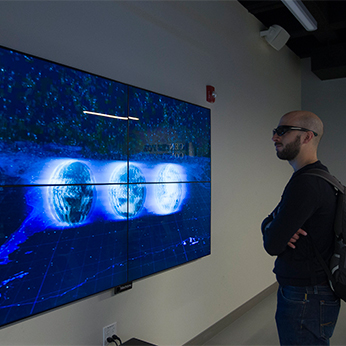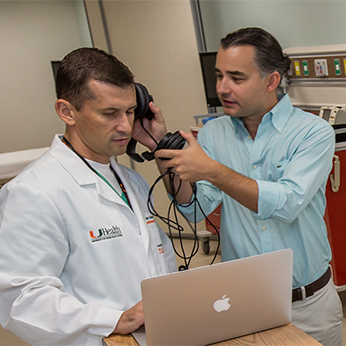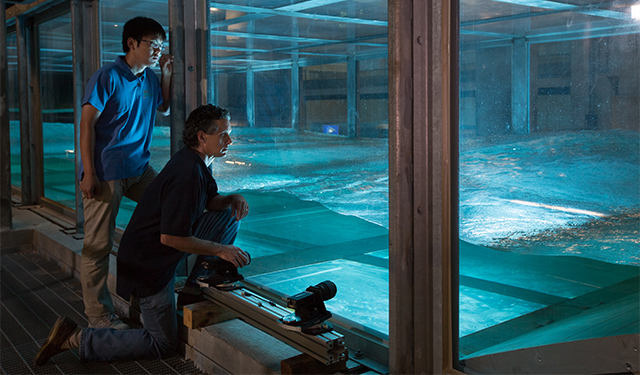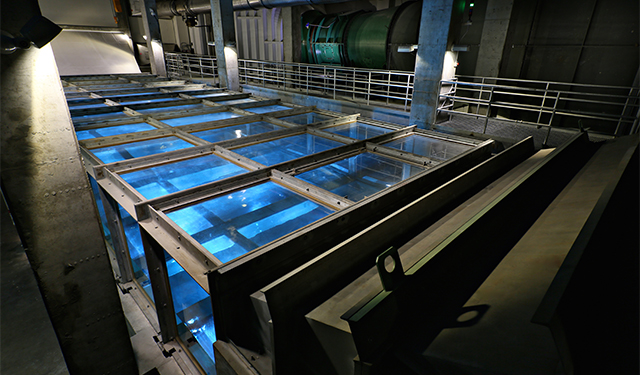by Robert C. Jones Jr.
The little beachfront house took quite a pounding. Towering swells crashed into its wooden stilts, while brutal winds, some exceeding 130 miles per hour, pummeled its outer walls, shaking the home so violently it looked as if it would topple at any second. But remarkably, it stood firm, at least on this day. Tomorrow, and the next day, it would endure much harsher conditions—spawned not by nature but with the flip of a switch.
Tropical cyclones are a regular weather occurrence inside the University of Miami’s Alfred C. Glassell, Jr. SUSTAIN (SUrge-STructure-Atmosphere INteraction) lab, where scientists can tinker with the controls of a 75-foot-long, 38,000-gallon wind-wave tank to simulate everything from a tropical storm to a cyclonic monster with 160-mile-per-hour winds, sea spray, and storm surge.
“There’s no other facility like it in the world,” said Brian Haus, professor of ocean sciences at UM’s Rosenstiel School of Marine and Atmospheric Science, where the tank is located.
Haus, who co-wrote the grant proposal that helped UM obtain the federal stimulus money to build the tank, is not exaggerating. SUSTAIN, he explained, is unique because of its ability to generate Category 5 wind speeds (157 miles per hour or higher) over water.
And for scientists and students alike, that offers an unmatched immersive learning experience.
By simulating and observing storm conditions in the tank, they hope to solve some of the mysteries of tropical cyclones that have puzzled meteorologists and forecasters for decades—such as why some storms intensify at an incredible rate.



